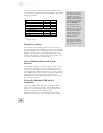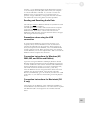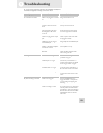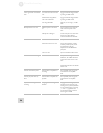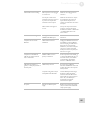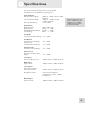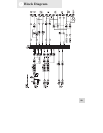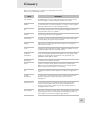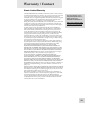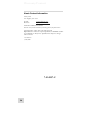
Glossary
31
Here are the definitions to some terms you’ll probably encounter
while using your iMultiMix 8 USB.
Term Definition
aux (auxiliary) An additional set of outputs and inputs found on many mixers. These
allow the addition of external effects and other audio sources.
balance
A
control that lets you control the position of sound in a stereo signal by
altering the relative levels of the left and right channels.
bus The electrical component that carries signals from multiple sources to a
single destination such as an amplifier.
channel A path through which an audio signal flows.
channel strip A section of a mixer on which reside controls like a fader, EQ and pan
for manipulating the signal of an input channel.
clipping The cutting of an audio signal caused by a level that is too great for a
mixer circuit to handle.
codec Compression/decompression algorithm. Different CODECs are used
by different digital audio devices and file formats.
condenser
microphone
A type of high-quality microphone that produces a weak signal, usually
requiring an external power source like the ones provided by your
iMultiMix 8 USB’s XLR mic inputs.
dB (decibel) A common unit of measure for audio.
detent A point of resistance in the path that a mixer knob or fader travels.
Detents are used to mark important settings. As you turn the knob or
slide the fader, you’ll feel it “click” into the detent.
dry Term used to describe an audio signal free of effects. The opposite of
“wet.”
dynamic
microphone
A common type of microphone that does not require external power.
Dynamic microphones are generally cheaper than condenser
microphones.
effects processor A unit whose purpose is to provide effects for audio signals. Some
common effects include reverb, chorus, flange and delay. Effects
processors come in many shapes and sizes, from small pedals up to
rectangular rackmount units.
EQ (equalizer)
T
he part of your mixer (or other device) that manipulates an audio signal
by lowering the level of some frequencies and increasing the levels of
others. EQ is used to fine-tune a signal’s highs and lows.




